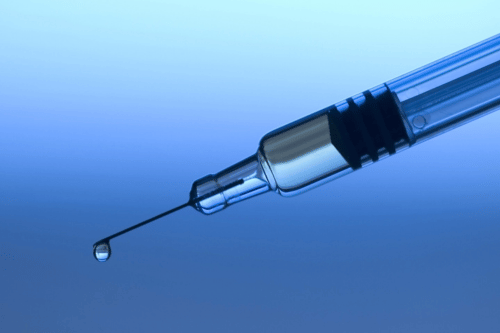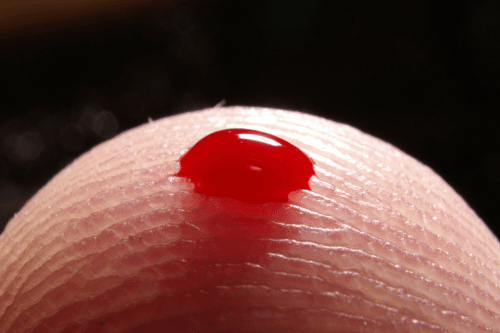

Track marks are the visible scars or puncture wounds that result from repeated intravenous drug use. These marks, often referred to as heroin track marks, typically appear on areas of the body where veins are accessible, such as the arms, legs, or hands. While track marks are often associated with drug abuse, they can also serve as indicators of deeper health issues stemming from substance addiction. They are a visual reminder of the physical and psychological toll that substance abuse can take on the human body.
Track marks are visible scars or marks left on the skin as a result of intravenous drug use. These marks are caused by the repeated injection of drugs into the veins, which can lead to significant damage to the skin and underlying tissues. When individuals inject drugs, they often use the same vein multiple times, which exacerbates the damage and increases the likelihood of developing track marks.
Additionally, the use of dirty or blunt needles can further harm the skin and veins, making track marks more pronounced. Intravenous drug use not only leaves these visible signs but also indicates deeper health issues related to drug use and addiction.

Track marks often appear as a result of iv drug use and can manifest in several ways:
Small puncture wounds: These are the most immediate signs of intravenous drug use and can remain visible for extended periods.
Bruising and discoloration: The repeated trauma to the veins can cause visible bruising around injection sites, often in deep shades of purple, blue, or green.
Scar tissue: Over time, the skin develops scars due to repeated injections, creating noticeable track mark scars that are tough to heal.
Collapsed veins: Intravenous drug use can damage the veins to the point of collapse, leaving permanent discoloration and texture changes in the skin, making them visible even after prolonged abstinence from drug use.
Inflamed or infected skin: Frequent injections can result in red, swollen, or painful skin around the injection site, indicating potential infection.
Track marks occur due to repeated injections at the same site or due to the use of dull or dirty needles. The trauma to the vein and surrounding tissue results in:
Puncture wounds
Scar formation
Skin infections
Underlying infections that could lead to severe complications such as blood clots, bloodstream infections, or abscesses.
The use of injectable drugs like heroin, prescription stimulants, or other substances significantly increases the likelihood of developing track marks. This risk is further heightened by poor injection techniques, lack of sterilization, and frequent usage.
The most frequent areas where track marks from intravenous drugs appear include:
Arms: Often the most visible, hence why individuals might wear long sleeves to hide them. Track marks on arms are the first places many people notice physical signs of intravenous drug use.
Legs and hands: These areas are common when veins in the arms are no longer accessible or are heavily scarred.
Other body parts: In some cases, drug users resort to less noticeable areas, such as the feet, neck, or groin, to hide the evidence of use.
Repeated injections in these areas not only create track marks but also heighten the risk of complications, including vein collapse and infection.
Repeated intravenous drug use and the resulting track marks can lead to significant health risks, such as:
Infections: Dirty needles or improper injection practices can introduce bacteria, leading to skin infections or more severe bloodstream infections.
Collapsed veins: Repeated injections damage veins, hindering normal blood flow and increasing health risks such as reduced circulation and chronic pain.
Blood clots: Frequent injections elevate the risk of developing clots, which can be life-threatening if they travel to the lungs or brain.
Scar tissue development: Over time, scar tissue builds up, making future injections more difficult and increasing health complications such as abscesses or nerve damage.
Cognitive and systemic health risks: Prolonged drug use can affect the human body beyond the physical signs of track marks, leading to neurological issues, cognitive decline, and compromised immune function.
Life-threatening conditions: Chronic intravenous drug use can result in severe conditions such as sepsis, endocarditis, or other systemic infections that affect the heart and other vital organs.
These health risks are often compounded by the challenges of heroin addiction, which requires comprehensive treatment and ongoing support.
Injecting drugs poses serious health risks that extend beyond the development of track marks. One of the primary concerns is the risk of infection. When drugs are injected, bacteria can be introduced into the bloodstream, leading to infections such as abscesses and cellulitis. Repeatedly injecting drugs into the same vein can cause the vein to collapse, making it difficult to find a suitable vein for future injections and increasing the risk of complications.
Sharing needles or injection equipment can also lead to the transmission of blood-borne diseases such as HIV and hepatitis, posing significant health risks. Furthermore, injecting drugs can lead to overdose, which can be life-threatening and requires immediate medical attention. The health risks associated with injecting drugs highlight the importance of seeking help and addressing substance abuse.
To notice track marks, look for:
Visible scars or puncture wounds along veins.
Discoloration or bruising at injection sites.
Signs of infection or inflammation, such as redness, swelling, or heat.
Needle marks and collapsed veins.
Thickened or damaged skin, which may indicate repeated trauma.
Family members or loved ones of those struggling with addiction should also pay attention to behavioral signs that may accompany track marks, such as wearing long sleeves in warm weather or avoiding situations where the arms or legs might be exposed.
Preventing track marks involves addressing the root cause—drug addiction. Seeking addiction treatment can provide:
Evidence-based therapies such as cognitive behavioral therapy (CBT).
Effective treatment options tailored to the individual, including detoxification and medication-assisted treatment.
Support to overcome substance use disorder and prevent long-term damage.
Additionally, harm reduction strategies, such as needle exchange programs, can help reduce immediate risks for those not yet ready to seek treatment.
At Sullivan Recovery, we offer comprehensive addiction treatment programs designed to address the physical and psychological aspects of intravenous drug use. These include:
Detoxification services to safely manage withdrawal symptoms and reduce physical dependency.
Therapeutic approaches to help individuals overcome addiction, understand their triggers, and build healthier coping mechanisms.
Aftercare planning to maintain sobriety, prevent relapse, and ensure continued support through counseling, support groups, and relapse prevention strategies.
Integrated care for co-occurring disorders, such as mental health conditions, that may contribute to substance abuse.
Track marks are more than a physical sign of drug use; they signify a deeper struggle with substance abuse. By seeking help, individuals can begin their journey to recovery and healing, addressing not just the visible signs of drug addiction but also the underlying causes.
Recovery from intravenous drug use requires a comprehensive approach that addresses the physical, emotional, and psychological aspects of addiction. The first step in recovery is often detoxification, a medically supervised process that helps individuals safely withdraw from the drug. This is followed by counseling, which can include both individual and group therapy to address the underlying causes of addiction and develop healthy coping skills.
Medication-assisted treatment, using medications such as methadone or buprenorphine, can help manage withdrawal symptoms and reduce cravings, making it easier to maintain sobriety. Participation in support groups, such as Narcotics Anonymous, provides a sense of community and accountability, which is crucial for long-term recovery. By addressing all aspects of addiction, individuals can work towards a healthier, drug-free life.
If you or someone you know is struggling with intravenous drug use, there are numerous resources available to provide support and guidance. National helplines, such as the Substance Abuse and Mental Health Services Administration (SAMHSA) National Helpline (1-800-662-HELP (4357)), offer confidential assistance and information on treatment options. Treatment centers specialize in providing comprehensive care for addiction, including detoxification, counseling, and aftercare planning.
Support groups, such as Narcotics Anonymous and the National Alliance on Mental Illness (NAMI), offer a sense of community and ongoing support for individuals in recovery. Additionally, online resources from organizations like the Centers for Disease Control and Prevention (CDC) and the National Institute on Drug Abuse (NIDA) provide valuable information and tools for understanding and overcoming addiction. These resources can be instrumental in helping individuals navigate the path to recovery and reclaim their lives from substance abuse.
If you or a loved one is struggling with drug addiction, reach out to Sullivan Recovery today. Our compassionate team is here to guide you toward a healthier future, free from the scars of substance abuse. With a focus on holistic and individualized care, we aim to support you every step of the way in reclaiming your life and health.

At Sullivan Recovery, as an in-network provider we work with most insurance plans, such as:
And More
If you or a loved one are struggling with mental health challenges or substance abuse, reach out to Sullivan Recovery today. Our team of compassionate professionals is here to support your journey towards lasting well-being. Give us a call at 949-836-7180.
Early signs include small puncture wounds, bruising, or redness around common injection sites such as the arms or hands.
While some track marks may fade over time, repeated injections often lead to permanent scarring and discoloration.
Track marks are typically linear and located along veins, whereas other skin conditions like rashes or scabies have different patterns and causes.
While treatment can’t always reverse physical scars, it addresses the underlying addiction and helps prevent further damage. Skin treatments and counseling may improve appearance and healing.